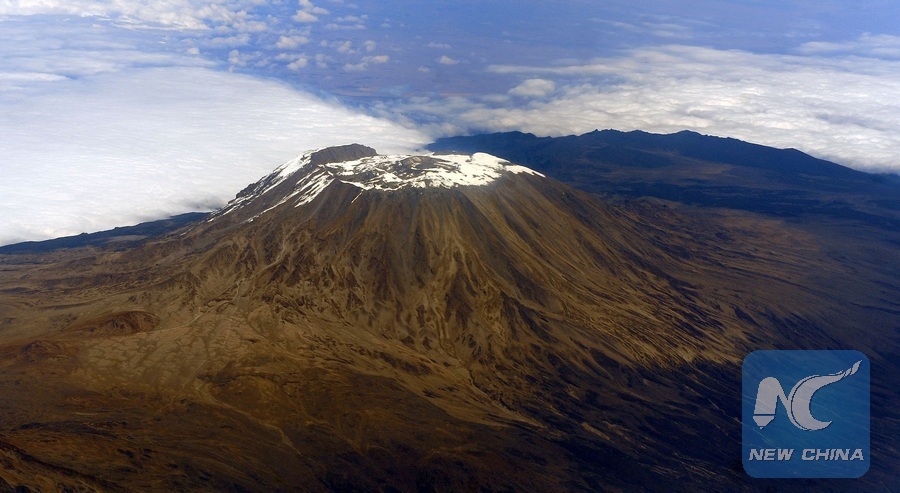
Snow-caped peak of Kilimanjaro is seen on the border between Kenya and Tanzania on August 3, 2012. (Xinhua/Ding Haitao)
NAIROBI, Oct. 20 (Xinhua) -- Reforesting Africa's highest mountain could help protect vital water supplies that are under threat across large parts of East Africa, according to a newly released United Nations Environment report.
The report also says protecting East Africa's mountain ecosystems will help safeguard the region's vital tourism industry, which is worth 7 billion U.S. dollars to East Africa.
"Across the continent, the damage done to these vital ecosystems is depriving people of the basic building blocks of life," said Erik Solheim, head of UN Environment.
He said Mount Kilimanjaro is one example of how climate change is severely damaging Africa's majestic mountains and the people who depend on them.
Solheim observed that as climate change intensifies, it is essential that governments act swiftly to prevent further harm.
The mountains of East Africa are not only highly productive agricultural areas, they also have unexploited hydro-power potential for a region crippled by a lack of electricity.
Rivers in the Nile Basin, for example, could generate 20 gigawatts of electricity while the Mau Forest could generate a further 508 megawatts -- enough to meet half of Kenya's capacity.
Mount Kilimanjaro, the highest in Africa, contributes to over one third of Tanzania's total revenue from tourism but is facing problems ranging from shrinking glacier to rampant wild fires.
The report urges the Tanzanian government to protect the mountain's water catchment area by reforesting the mountain, investing in early warning systems and making climate adaptation a top priority.
LESS ICE, MORE FIRE
Mount Kilimanjaro forests are a vital source of water for the surrounding towns and the wider region. Water from the mountain feeds one of Tanzania's largest rivers, the Pangani.
The report titled "Sustainable Mountain Development in East Africa in a Changing Climate" warned that the glaciers are likely to vanish completely within a few decades as a result of climate change if urgent action is not taken.
Meanwhile, higher temperatures have increased the number of wildfires, which have destroyed 13,000 hectares of the mountain's forest since 1976.
The town of Moshi, which is located in the foothills of Mount Kilimanjaro, is already experiencing severe water shortages as rivers begin to dry up, starving farmland of water in an area already struggling to cope with a dramatic drop in rainfall.
The report was produced by UN Environment, GRID-Arendal, East African Community, the Albertine Rift Conservation Society and Nature-RIDD.
It is produced as part of the Mountain Adaptation Outlook Series, which was launched by UN Environment at the climate talks in Paris in 2015.

